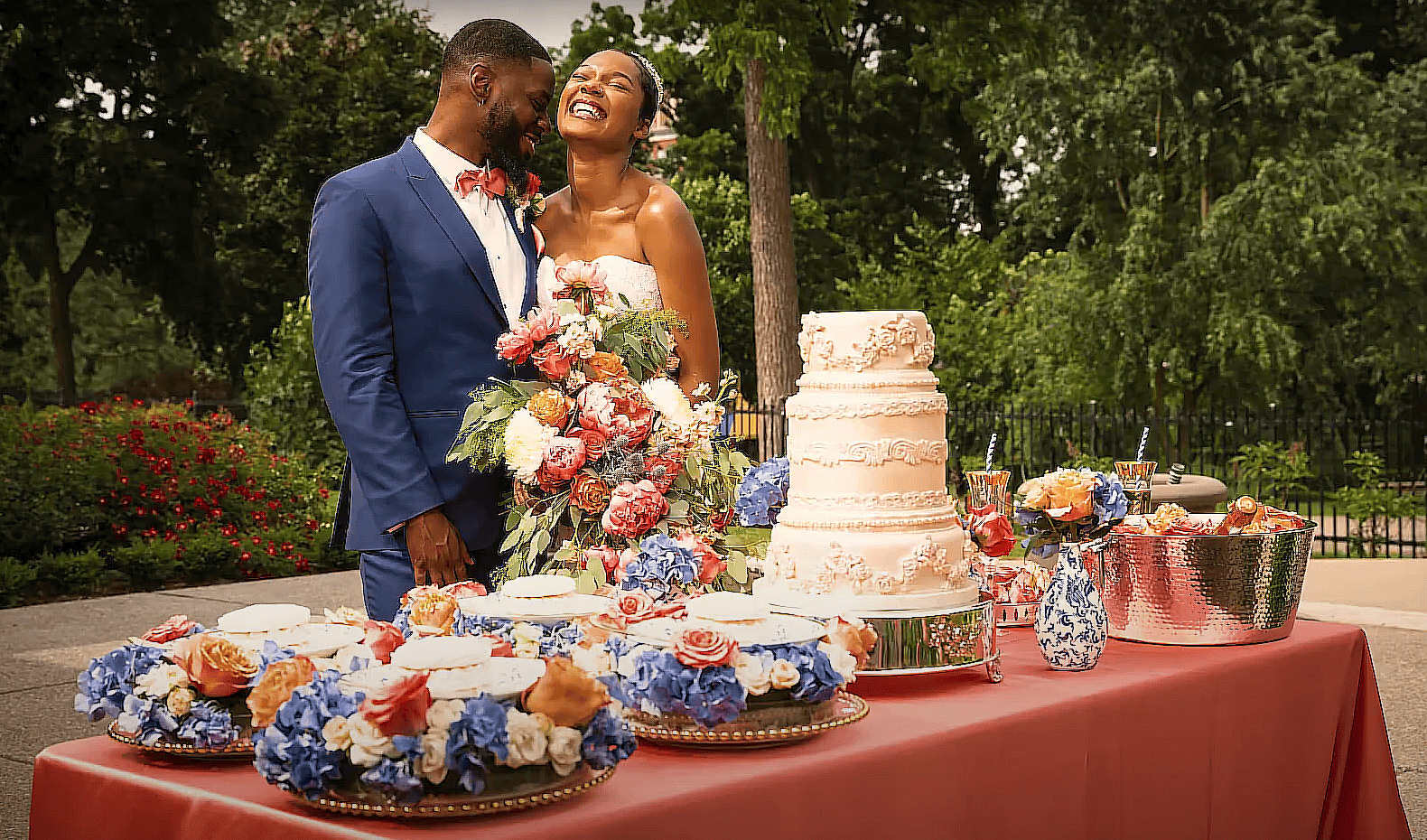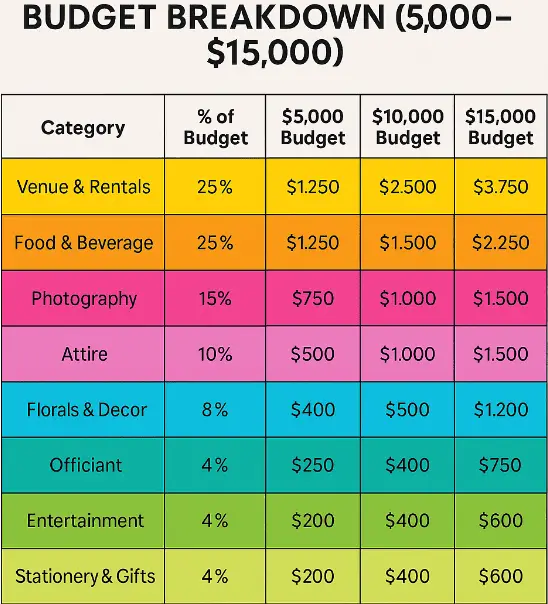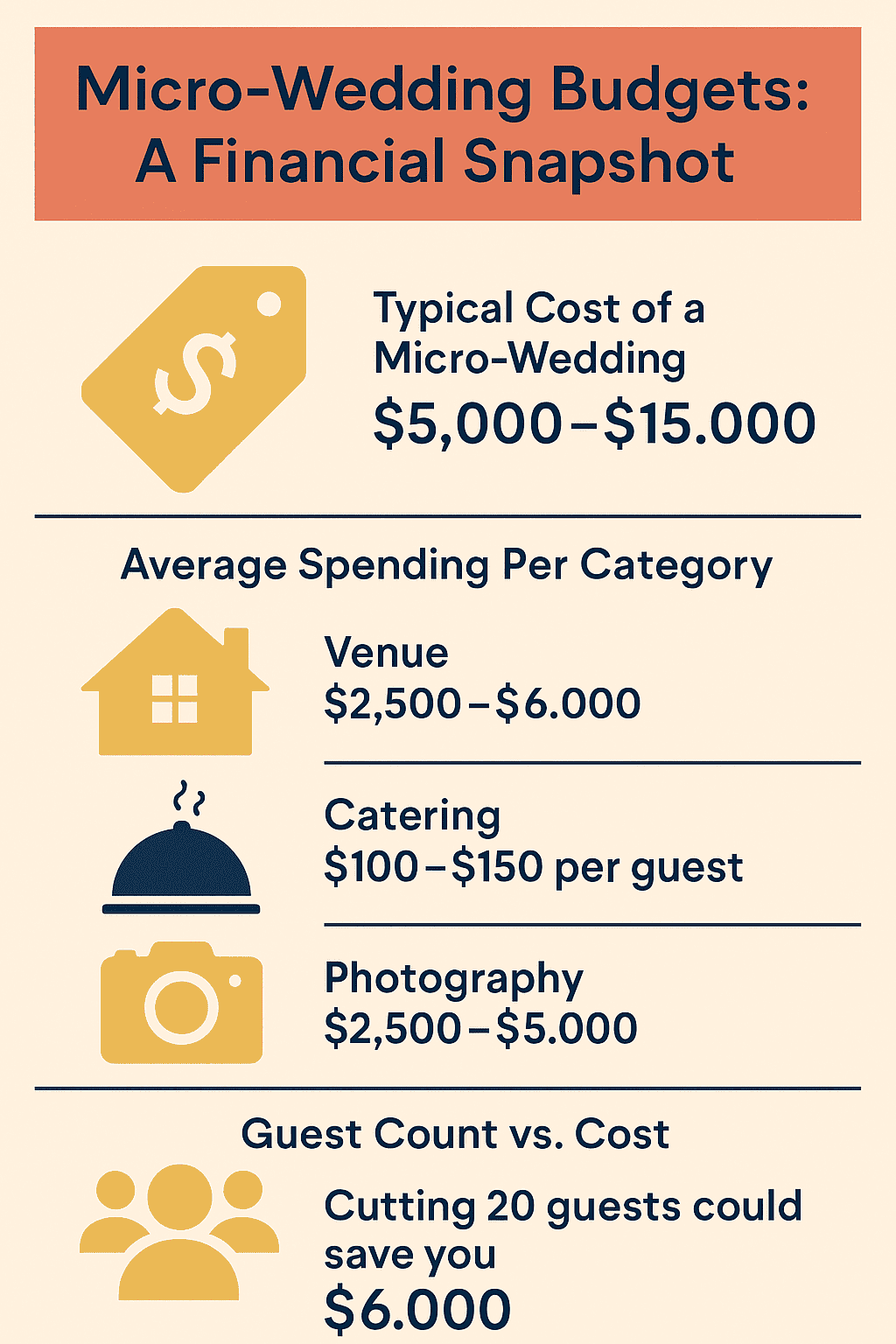Big weddings used to be the dream: chandeliers, a 200-person guest list, ten-layer cakes, and enough tulle to suffocate a small city. But somewhere between rising costs, a global pandemic, and the realization that you don’t actually like half the people on your guest list, micro-weddings stepped into the spotlight. And spoiler alert—they’re not going anywhere.
In a world where more is often considered better, couples are bucking the trend and saying, “Actually, we’ll take less—and make it magical.” Micro-weddings are intimate, intentional, and surprisingly luxurious. Because when you’re only inviting your ride-or-dies, you can splurge where it counts and skip the rest without guilt (or chair covers).
What counts as “micro,” exactly? Definitions vary, but most pros agree we’re talking about weddings with 50 guests or fewer. Some go as low as 10–15, especially for elopement-style setups. What they lack in size, they make up for in soul. If big weddings are a production, micro-weddings are a private concert—with the playlist curated by you.
SweetSundayEvents.comWhy Couples Are Downsizing
Let’s talk numbers for a second—because weddings, love them or not, are a financial game. According to Zola’s 2025 First Look Report, the average wedding in the U.S. is expected to cost around $36,000. That’s not chump change. And with inflation touching everything from flowers to photography, couples are getting savvy about where their dollars go.
Enter the micro-wedding. Fewer guests mean fewer tables to rent, fewer meals to serve, and a lot less stress over who’s seated next to your third cousin’s plus-one. According to a 2024 survey from The Knot, nearly 40% of couples said they would prefer a smaller celebration if it meant they could spend more on quality elements—like a better photographer or a more meaningful venue.
Real talk: It’s not just about money. Micro-weddings are also emotionally efficient. You can actually talk to every guest. You can remember your vows instead of your planner’s timeline. And you get to focus on each other without feeling like cruise ship directors trying to herd 200 people toward the dance floor.
Less Stress, More Intention
Let’s be honest: wedding planning can feel like a part-time job with overtime and no PTO. From color palettes to seating charts, there’s a lot to juggle—and most of it is for show. Micro-weddings trim the fat and leave you with the juicy stuff: the actual experience of getting married.
With fewer moving parts, the timeline becomes more fluid. Want to start your ceremony at 4:17 because that’s when you met your partner? Do it. Want to skip the cake cutting and have a mochi cart instead? No one’s going to argue. With a micro-wedding, you’re not trying to please a crowd—you’re crafting a memory.
One couple in Portland chose to hold their micro-wedding on a mountain trail. Ten guests. One dog. No seating chart. The ceremony ended with champagne from a backpack cooler and a charcuterie board they picked up that morning. “It was the first wedding I’ve been to that didn’t feel like a performance,” their officiant said.
In short: small weddings create space—for spontaneity, for laughter, for silence that doesn’t feel awkward. You can cry without worrying if your fake lashes are going to end up in someone’s salad. You can actually enjoy your wedding, which shouldn’t be a radical concept—but here we are.
The Luxe Side of “Small”
Don’t confuse small with cheap. Micro-weddings may have fewer guests, but they often have more style. When you’re not feeding 200 people, you can afford to upgrade the details: a five-course meal prepared by a private chef, a killer string quartet, custom hand-lettered menus for everyone at the table. Suddenly, the things that were “too expensive” for a big wedding become doable—and memorable.
It’s no wonder high-end vendors are leaning into the micro-wedding boom. Luxury florists, boutique venues, even Michelin-starred restaurants are tailoring packages for smaller celebrations. According to Green Wedding Shoes, micro-weddings are driving a wave of creative design—because with fewer guests, each touch has more impact. You’re not decorating a ballroom. You’re curating a vibe.
And let’s not forget the venue possibilities. With a smaller group, you’re not limited to banquet halls or giant estates. Think gardens, rooftops, historic homes, hidden courtyards, art galleries, cabins in the woods. Spaces that feel personal, where the architecture or landscape is part of the story.
Micro-Weddings vs. Elopements
People often confuse micro-weddings with elopements, but they’re not the same thing. An elopement is usually a just-the-two-of-you situation (maybe with a photographer and an officiant tagging along). Micro-weddings are still “real” weddings—they have guests, a timeline, usually a dinner—but they’re just…smaller. Less production, more presence.
You can still wear a gown or a suit. You can still have a cake (or a tower of doughnuts, live your life). You can still have toasts, music, even a choreographed first dance if that’s your thing. The difference is in scale—and the intentionality that comes with it. Every decision feels closer to the heart because there’s no obligation to include anything you don’t actually want.
Think of it this way: if traditional weddings are full-length feature films, micro-weddings are indie shorts that win festivals and leave people weeping in 12 minutes flat. Less filler, more feels.
Vendors Are On Board
The industry’s catching on, too. Wedding pros across the board—from planners to caterers to florists—are offering micro-wedding packages designed for flexibility and flair. Some venues even have tiered pricing now, with rates for micro-weddings that are more manageable and still come with top-tier service.
And get this: more vendors are excited about these kinds of weddings. With smaller guest counts, they can push creative boundaries, try new ideas, and form closer relationships with their clients. One florist we spoke to said, “It’s easier to create really intentional art for 30 people than to crank out centerpieces for 200.” The result? Better experiences for everyone involved.
Why Micro-Weddings Are Sticking Around
Some people assumed micro-weddings were a pandemic-era fad. Something born out of necessity when guest limits and travel bans were the norm. But even now, when big weddings are fully back, micro-weddings are not only sticking around—they’re thriving.
The pandemic reset a lot of people’s priorities. Couples realized that a wedding doesn’t have to be a mega-production to feel meaningful. In fact, many found that less felt like more—more connection, more memories, more value for their investment.
It’s also about flexibility. Micro-weddings can happen anywhere: mountaintops, museums, someone’s cozy backyard, a little chapel followed by brunch. They’re easier to plan (sometimes even in a matter of weeks), less likely to be postponed if things go sideways, and—here’s a big one—they often cause fewer family meltdowns. Not none, let’s not be naïve—but definitely fewer.
Guest Lists That Make Sense (and Spark Joy)
Let’s talk numbers. Traditional weddings often mean inviting your mom’s coworkers, your cousin’s new boyfriend, and that one friend you haven’t talked to since 2017 but feel guilty about. Micro-weddings give you an excuse to skip all that noise. If you wouldn’t take them out to dinner, maybe they don’t need a seat at your wedding.
This isn’t about excluding people. It’s about making space for the people who matter most—those who’ve been part of your story and who you want in the photos that will line your walls forever. With fewer guests, you actually get to talk to everyone. You might even eat your dinner while it’s hot. Imagine that.
The Financial Side of Things
SweetSundayEvents.comWe can’t ignore the budget. One of the biggest reasons couples are turning to micro-weddings is financial flexibility. Smaller doesn’t always mean cheaper—luxury micro-weddings are very much a thing—but it does give you options. Want to splurge on that five-course chef-curated meal? You can. Want to save and put the rest toward a house, a honeymoon, or paying off those student loans? You can do that too.
Couples planning micro-weddings in 2025 are reporting average costs between $10,000 and $15,000, though it varies wildly depending on location and vision. Compare that to the $36,000 national average for traditional weddings (Zola’s 2025 First Look Report), and it’s easy to see the appeal. More celebration, less financial stress.
The Influence of Social Media
Instagram and TikTok have shaped wedding expectations, but they’ve also fueled the micro-wedding fire. It’s not about having the biggest wedding anymore—it’s about having the most unique, authentic, and aesthetic one. A well-shot backyard ceremony can make a bigger splash online than a ballroom banquet. And those dreamy content creation packages? They’re now being booked just as much for micro-weddings as full-scale affairs.
Some couples even hire a content creator just for behind-the-scenes reels—think of it as your wedding’s own social media manager. When done well, it turns the whole celebration into something you can relive again and again (or flex about to your future kids when they’re complaining about how “boring” commitment is).
Redefining What Matters
Micro-weddings aren’t just a cost-saving trend. They’re part of a bigger shift in how we think about commitment and celebration. They put the emphasis back on what weddings are really supposed to be about: two people promising forever, surrounded by the ones who love them most.
They strip away the performance and put the spotlight back on the vows, the laughter, the “I can’t believe we did it” look exchanged across the dinner table. They’re a reminder that your wedding isn’t about trends, algorithms, or tradition for tradition’s sake. It’s about you—and what feels right.
Beyond the Wedding Day
Interestingly, micro-weddings often spill into what couples want after the wedding, too. Some use the extra funds to plan a killer honeymoon. Others invest in a photographer they love or commission a custom piece of art to remember the day. Some go full experience mode and plan weekend-long events: welcome dinners, post-wedding hikes, brunches with Bloody Mary bars. With fewer guests and more flexibility, you can stretch the celebration without stretching yourself too thin.
This trend is changing more than the wedding industry—it’s changing how couples see their future. Intention over spectacle. Quality over quantity. Moments over Instagrammability (although they’re still pretty damn photogenic).
No Going Back?
Will micro-weddings eventually go out of style? Possibly. Trends come and go. But this one feels different. It feels like the natural evolution of wedding culture. Like maybe we were all holding our breath, trying to hit perfection, and now we’ve exhaled—and realized the magic was never in the scale. It was always in the sincerity.
So if you’re planning a wedding right now and the whole thing feels too big, too much, too not-you—take a beat. Ask yourself what you actually want. Then build from there. Whether it’s 200 guests or 20, the most important thing is that it feels like yours.
The Wrap (Without a Bow)
Micro-weddings aren’t second-tier events. They’re not compromise weddings. They’re deeply personal, wildly joyful, and surprisingly freeing. They let you edit out the parts that don’t serve you and double down on the ones that do. And in a world that always seems to be shouting “more, more, more,” there’s something radical about choosing less—and making it mean more.
Your wedding doesn’t need to be big to be unforgettable. It just needs to be honest. And whether that means five guests or fifty, champagne towers or a taco bar, fancy shoes or no shoes at all—you’ve got options.
Keep it personal. Keep it real. That’s where the magic lives.




